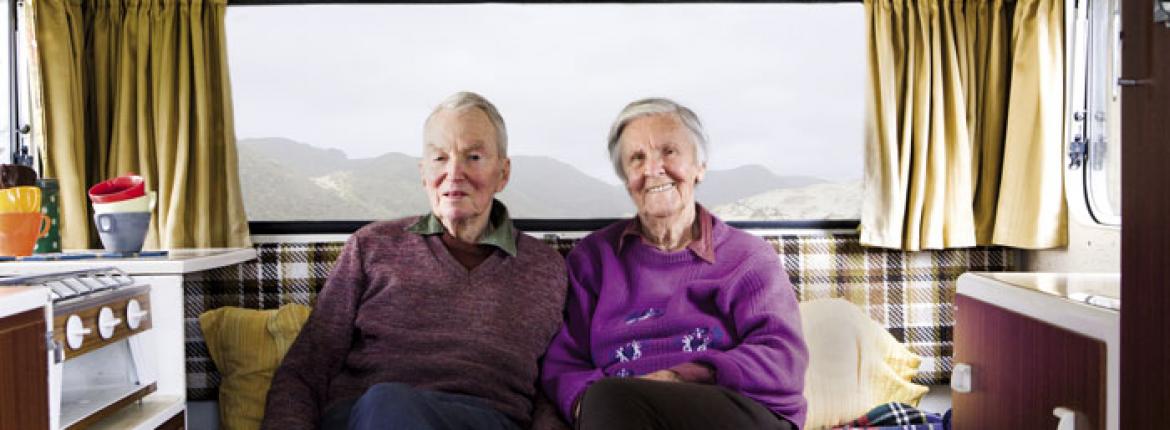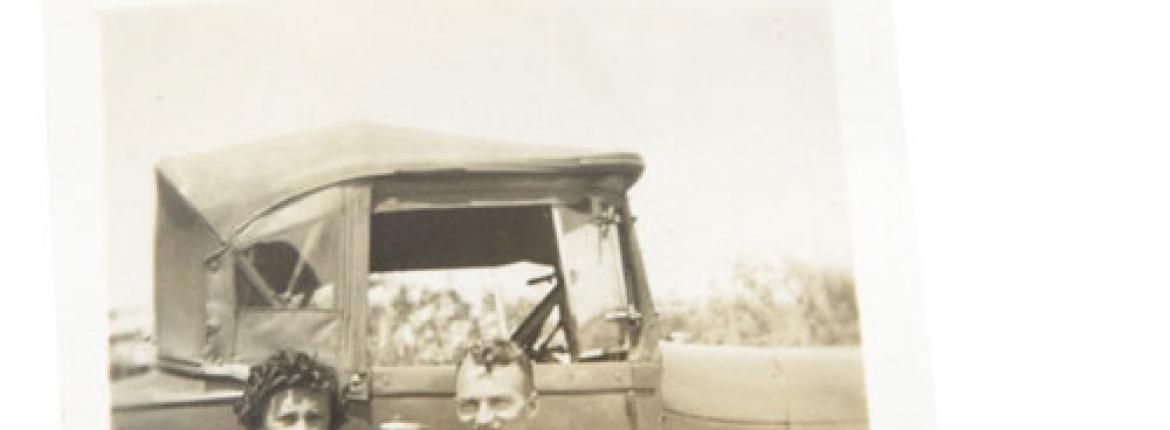Routes and itineraries in those days were planned with a healthy respect for the limitations of technology. You didn’t want to set your sights too far afield or beyond too many hills, with an overburdened ‘tin lizzie’ and its gravity-fed carburettor on the job.
That first summer, Vera’s family drove to Belt Road in New Plymouth where, for 2/6 paid to a lady who lived in a neat little cottage adjacent (where the hall is now), you could camp amongst the lupins with a view out over Ngamotu Beach to the Sugarloaves, or back to the serene peak of Mount Taranaki.
Conditions were pretty primitive. The tent was waterproof – up to a point – and it certainly caught the wind. Cooking was done on a petrol-burning Primus stove.
The camp facilities consisted, in those days, of a couple of long-drop toilets.
In 1944, Vera married Les Heath, a motor mechanic. Before they shifted to Napier, they loaded up Les’ Model A Ford roadster and set off on their honeymoon – to Belt Road. It was a practical rather than a sentimental choice: it was wartime, and Kiwi wings had been clipped by petrol rationing. The newly-weds had to supplement their own allocation of coupons with petrol scrounged from friends and relatives in order to have enough to get them to New Plymouth and back.
Lighting was candles, and bedding was heavy woollen blankets on canvas camp stretchers.
By now, the campground had been developed somewhat, with septic tank toilets and a facilities block. Les and Vera remember the daily four o’clock rush that occurred when the hot water came on in the showers. That summer, the camp was packed cheek-by-jowl with families from all over the district. Many dads would pitch the tent and go back to work leaving mum and the kids on holiday.
It rained, Les remembers. They were using his eight-by-eight tent – a scaled-down version of Vera’s family’s tent – and it leaked. But Les knew an old miner’s trick and, when the downpour eased, he tossed handfuls of flour on the wet canvas. No more leaks!
That makeshift waterproofing saw them through several more memorable summer holidays, as peace and eventually the end of petrol rationing enabled them to see a bit more of the country. But they were back at Belt Road when Les decided to join the trend toward caravanning. He and Vera had borrowed her family’s 10 x 10 tent, which had a spring-loaded frame for the roof – a great system, except when it blew.
That night at Belt Road, it was blowing hard enough for Les to take the precaution of tying the tent to the car. He was standing inside and anxiously watching the flogging canvas and flexing frame when the spring gave way and a heavy wooden piece clocked him on the head.
Les resolved to get a caravan.
The Heaths’ first caravan, which Les built himself, was a pop-up camper – a trailer with a bunk at either end, canvas walls and a solid roof that could be raised when they reached their destination. The towing capability of the vehicles they owned had improved astronomically. So, too, had living conditions on the road, although Vera is adamant that her generation was willing to do without creature comforts that younger folk consider essentials. Their own children – two boys – grew up with old-school camping. They would sleep in the camper, their parents in the tent.
Another, larger van followed, factory-built this time. An 1800cc Peugeot put the top of the North Island and even the South Island within range, and there were soon few parts of the country the Heath family didn’t know.
But, when Vera and Les celebrated their golden wedding anniversary in 1994, the little two-berth Lilliput caravan they’d recently inherited from friends was parked in its usual spot at Belt Road, where it presided over a little community of tents and caravans occupied by mates and relatives.
Now, although they’re in their 90s, Les and Vera still get away camping when they can, their son towing the little van to the campground for them. They get just as much pleasure out of it as they ever did. And the best camping trip they’ve ever had? ‘I don’t know,’ shrugs Vera. ‘All of them, I suppose.’
Reported by John McCrystal for our AA Directions Summer 2011 issue





